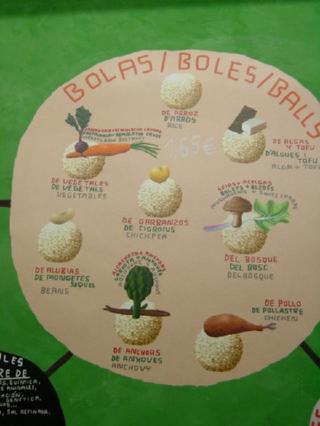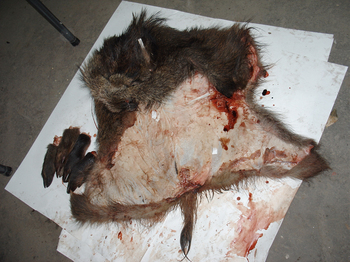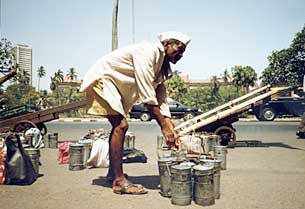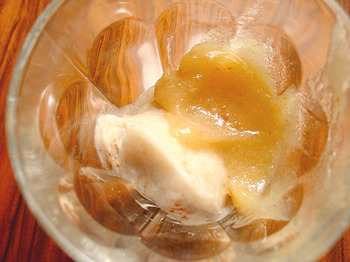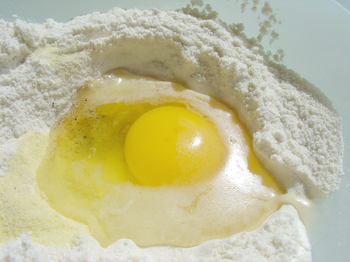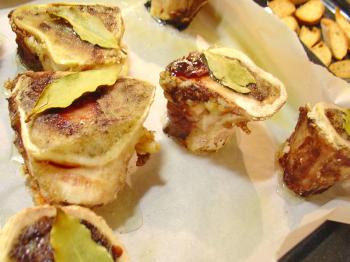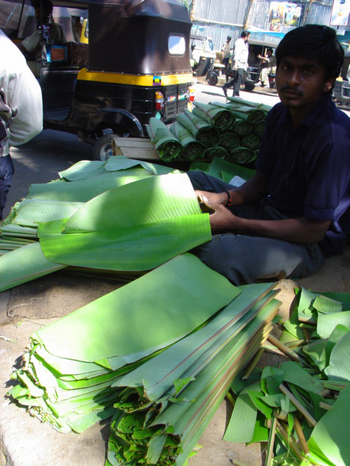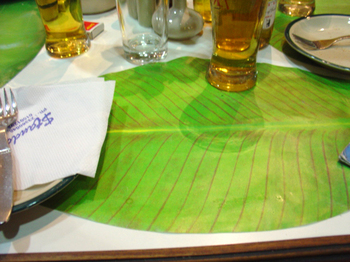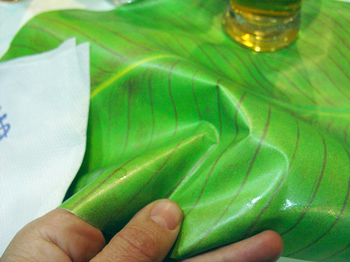Leafenware is everything but the squeal
June 2, 2005
A banana leaf is a plate in Bangalore. The uppermost image shows a Ghandi bazaar (Bangalore) plate maker producing and selling leafenware on the street. The waste products of his production are eaten by noshing cows. This is ‘everything but the squeal’ vegetarian-style.
But Delhi is far far away from the banana climes of the South and an artificial banana leaf plate seems to be a logical substitute. This fabric photoshop job was doing duty as a placemat at drinking club, the Standard at CP before we procured it from the owners for the culiblog packaging archive.
Faithful culiblog readers are familiar with the entry just a few weeks ago of the pepesan sans pep dish, wrapped in bamboo leaves. I am curious about whether bamboo leaves bought at a Chinese supermarket in Amsterdam, imported from somewhere deep in the guts of PRChina qualify as ecologically sound plate choices, but I would like to hear from someone with a strong opinion - or better yet - some actual knowledge on this subject.
Q1: Is a one-use banana leaf plate a more sustainable choice than a ceramic plate in a place where banana trees are harvested?
Q2: Is a pack of dried bamboo leaves a more ecologically sound dinner party option than ceramic plates when the bamboo leaves are imported from PRChina and the dinner party is in the Netherlands? or Occitania?
Q3: Is a re-usable (maybe 100 times) fabric plate more ecological than a ceramic plate if the fabric plate is produced locally? (The plate can be rinsed in soapy water and rinsed clean.)
Q4: Are recycled paper plates like the ones shown in this culiblog entry or the tetra-pak plates more ecological than the different sorts of leaf plates if all of the materials come from local sources?
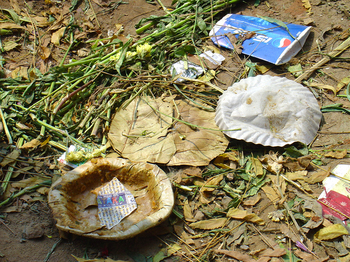
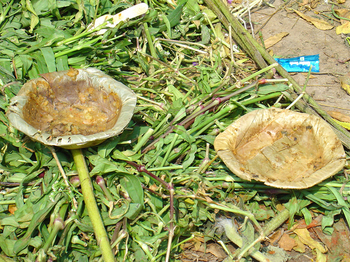
Pictured above are images of leaf plate and other vegetable (and non-veg) trash on the streets of Delhi.
How does one calculate the sustainability of a given object? Ceramic or stainless steel plates are produced under industrial conditions, raw materials possibly imported, packaging distribution all factor in. Imported dried bamboo leaves do quite a lot of travelling. Banana leaves seem ecological (if locally grown) but what are the conditions of the banana plantation and how are the leaves harvested? And what if you already own some plates? And what if you live in the city and don’t have a compost pile or animals with four stomaches roaming the streets?
technorati tags: leafenware, Delhi, sustainability
debra at 9:47 | Comments (16) | post to del.icio.us

